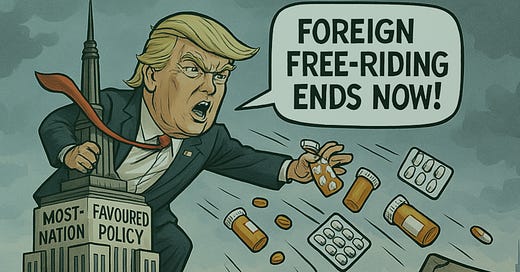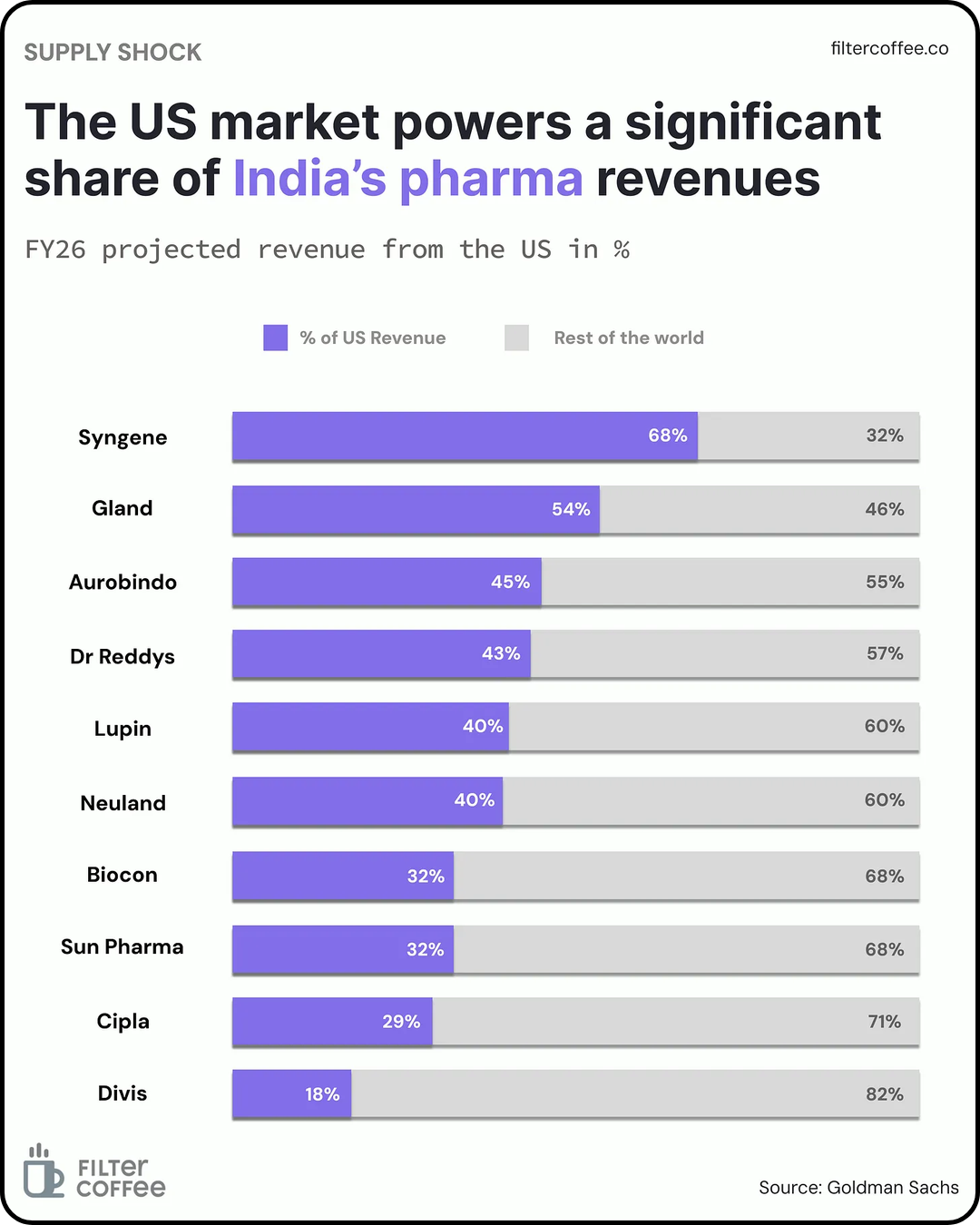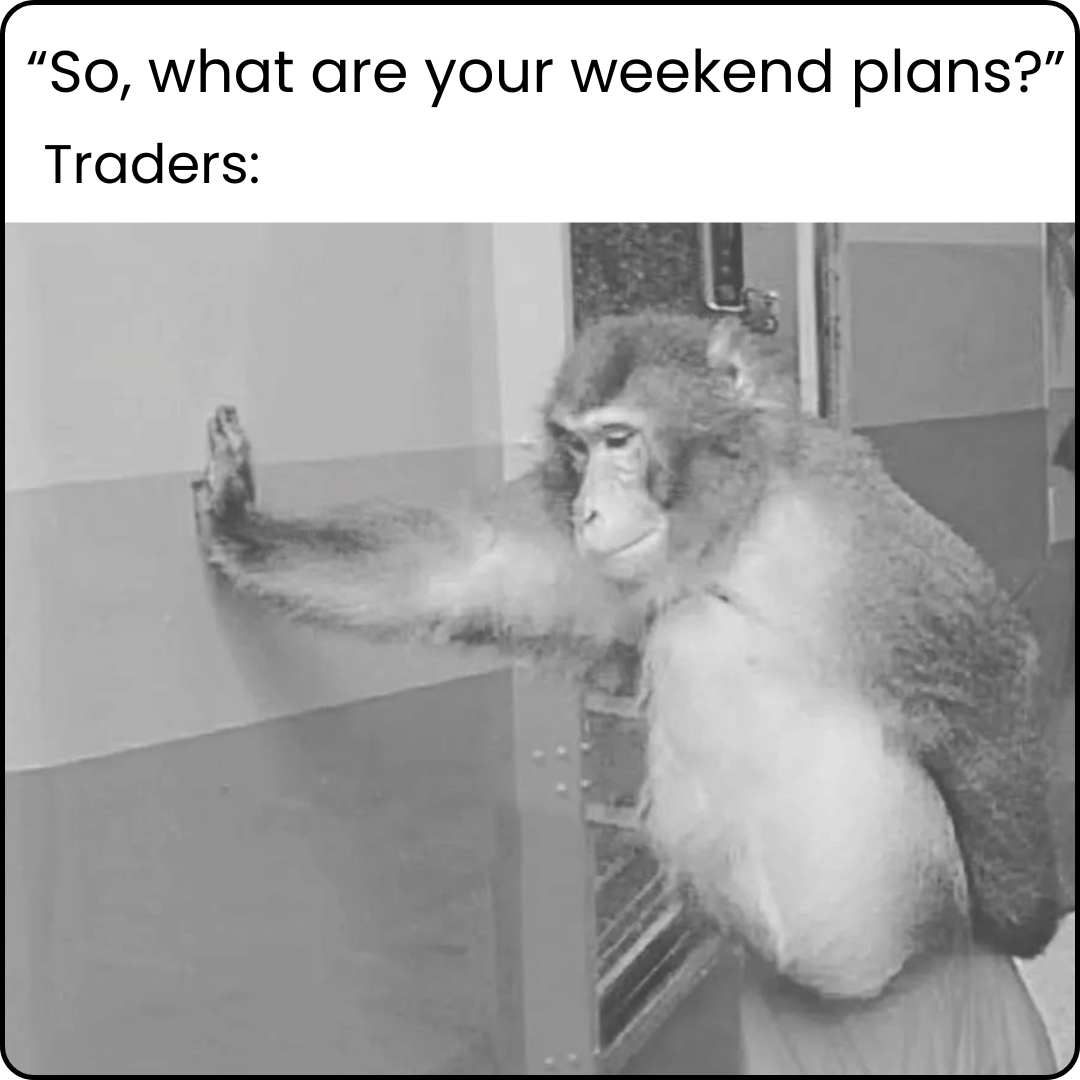Our aim through TVS Weekly is to break down financial stories and concepts simply, explaining what happened and why it matters to you.
No Jargon, no drama! Just stuff that actually makes sense.
Curious? Get more from us on our Instagram, WhatsApp, LinkedIn, or YouTube. Our 985k+ family awaits you!
In this week’s newsletter, we’ll learn about:
How could Trump’s drug price idea affect India?
How the Law of Small Numbers helps traders stay calm.
Market Kya Keh Raha Hai Sir?
US drug bills kept rising. People were angry.
Trump, whose global tariff war increased prices for Americans, now has a quick fix to reduce them and address the US drug prices at the same time.
He has signed an order to slash medicine prices by up to 60%. Drug stocks dived in both America and India.
But, will this policy have the same impact as Trump claims?
This week, we unpack America’s drug-cost mess, Trump’s quick fix, and what an actual solution could mean for India’s pharma giants.
What’s This New Policy?
Trump’s executive order wants US drug prices to be the same as what other wealthy countries like the EU pay. This is called the "Most-Favoured Nation" policy.
He wants the high American drug prices to match the lower prices of other wealthy nations. The policy mainly helps the 8% of Americans who are uninsured & buy drugs directly from manufacturers.
Firms get 30 days to comply or face regulations.
Why is Drug Pricing a Problem?
America’s healthcare system is complicated. Unlike most developed countries, it doesn’t have centralised drug pricing. Instead, drug makers set prices freely.
Further, most Americans don’t usually pay directly for these drugs, but through their insurance. These can be through government programs like Medicare or Medicaid, or through their employers.
It gets more complicated. Insurers rely on middlemen called Pharmacy Benefit Managers (PBMs) who negotiate drug prices. They aren’t transparent & keep prices high by charging commissions.
This leads to Americans paying prices 2- 3x higher than people in other wealthy countries.
Past Efforts to Fix the Problem
During his first term, Trump first introduced the "Most Favoured Nation" pricing model. The same model as now.
But unlike this time, where it’ll help only uninsured Americans, the original policy was for those covered under Medicare. A program that insures 66 million people and is government-funded.
However, courts blocked it due to procedural mistakes.
Later, President Joe Biden introduced the Inflation Reduction Act (IRA) in 2022, allowing Medicare to directly negotiate prices for drugs. Savings? About $6 billion on a program that spends almost a trillion.
Given past attempts, this policy feels watered down. With America’s powerful drug lobby in play, that might be by design.
The Most Powerful Lobby in the US pushes back.
Lobbying in the US is when groups try to influence government decisions or laws. The drug lobby is one of the strongest.
Let’s start with their shareholders.
Investor Reaction
Initially, global pharmaceutical stocks tumbled, indicating panic among drug makers. Companies like AstraZeneca, Novo Nordisk, and major Indian pharma companies saw stock drops.
But doubts soon emerged because the executive order lacked a concrete mechanism to implement the policy.
Companies were more vocal than investors.
Drug companies wasted no time in pushing back against Trump’s new pricing scheme.
Their first defence? “Don’t blame us.” Pharma companies argue it’s actually the middlemen and insurers who take nearly half of every dollar spent on medicines.
According to them, drug makers aren’t the real problem, it’s the hidden costs added by others.
But there’s a second big worry: profits. If Trump doesn’t back off, companies claim their profits will fall, forcing them to cut back on research and slow down new drug discoveries.
They even point to Europe, where tough government price negotiations have already chipped away at innovation.
US & India’s future if this goes on.
American pharma is a worldwide issue. It has about 30-40% of the global drug market and buys almost 1/3rd of India’s pharma exports.
The clue to see how Indians & Indian companies may be affected is in the title of the executive order:
“Stopping Foreign Free-riding on American Pharmaceutical Innovation”.
How Trump 2.0 sees the drug problem.
Trump believes that the high US drug prices subsidise other nations. The extra money lets other nations enjoy cheaper medicines at the US’s expense. The claim is shaky, but it guides his policy.
The United States is indeed a hub for drug discovery. American firms hold patents that give them exclusive rights to make new drugs. Once those patents expire, other manufacturers can copy the formulas.
This is where most Indian firms step in with cheaper generics, so India benefits. Here is where the order could pinch India.
A problem for Indian drug companies:
US drug R&D serves as indirect research for Indian companies who manufacture these drugs later a generics.
When its profits fall, companies invest less in new molecules. Indian manufacturers, who use these to later make generics, will then have fewer fresh drugs to make.
A problem for Indians:
For global drug sales, the US accounts for 45% of the total. Seeing a reduction in revenue there, they might compensate from the rest of the world.
This could make non-generic, innovative drugs that India imports from the US more expensive for Indian patients.
A middle path
If Trump rushes, everyone loses. Drug makers may see profits fall & insured Americans could still pay a lot, as the current policy would mainly benefit uninsured Americans.
Further, other countries may face price hikes, and research funding could shrink. US drug prices need to be reduced, but change must be steady.
A bridge between Biden’s & Trump’s approach feels wiser.
Biden’s Medicare law would cut out the middlemen and let Medicare negotiate drug prices directly. Here, Trump’s most-favoured-nation policy could be used as a price target.
This would be a slower road, but companies would get time to adapt to lower prices. Profits may dip, but essential research could still go on.
But, Trump’s Gen Z attention span?
This problem could be solvable using the middle path, but is it solvable with Trump? Seeing Trump’s 100 days in office, on thing is for sure.
Trump isn’t predictable, maybe even to himself. The open question is Trump’s focus. If he sticks with a measured plan, only then would Americans benefit.
For India and others, the impact depends on how deep the cuts go and whether firms lift foreign prices to make up the loss.
So, should India worry about these changes? Tell me in the comments!
MEME OF THE WEEK:
Dalal Street Dictionary
Imagine a new trader starts trading in a market that goes up and down randomly. Here, the chance of daily profit or loss is 50%.
By Friday, something seems wrong.
The trader placed one trade daily and lost money each time, from Monday through Thursday.
Initially upset, the trader recalls that in random markets, the odds of losing five consecutive times are slim.
On Friday, convinced a win is due, the trader places another trade. It results in another loss. A sense of being cheated emerges.
According to the 50% probability, the trader should have won around half the time or at least once. Right?
No, this is a common misunderstanding among traders and is explained by the Law of Small Numbers.
This law says people wrongly expect the long-term average to show up in the short term.
If you had four days of losses, your brain says the fifth day must be a win. Because over time, wins and losses are fifty-fifty. But that’s not how probability works.
It only tells the probability on a single given day. The chance of profit on Friday is 50%. Just 50%. The long-term average does not correct your short-term streak.
But how is this useful in markets?
Understanding this bias helps you stay rational and not make rash decisions based on long-term data. Here are a few examples:
Prevents revenge trading: after losses, many traders double down, expecting a win. That’s emotion, not probability.
Encourages long-term thinking: good strategies can lose short-term. Judging them too early leads to quitting too soon.
Controls overconfidence: winning streaks feel like skill, but randomness plays a role. Staying aware avoids costly mistakes.
The Law of Small Numbers explains why traders should stay calm, think clearly, and avoid emotional trades.
What More Caught My Eye?
Policybazaar to Hospitalbazaar?
What are Indians’ favourite stocks?
Stock effect on Raymond Demerger.
The Essential IPO Terms.
UBS & Credit Suisse’s 24,000 employee saga ends.
Recommendations
I recommend watching a video on the South Sea Bubble of 1720, which was one of the most dramatic financial crashes in history.
A must-watch for anyone curious about how the word “bubble” was born and how one financial crash sparked political chaos across Europe.
Thanks for reading this weekend’s newsletter. I’d like to know your thoughts, so please feel free to comment below. Your feedback helps us improve!
And don’t forget to like, share, and restack!
Song of the Week:
This is Parth Verma,
Signing off.









Amazing keep updating us with such impactful knowledge
I have always heard people saying bubble is forming in the market, but I was never curious why it says bubble only, now I will watch the video and get an understanding why it is called and what was the reason behind it. Thank you sir for sharing this..And love your content too. ❤️